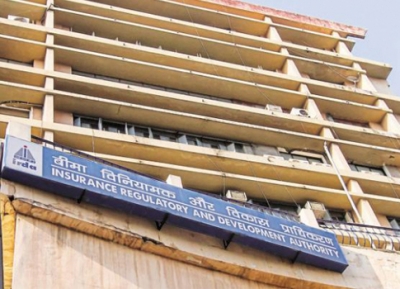Chennai, Nov 29: The Indian insurance regulator is barking at the wrong tree or not addressing the elephant in the room — high commissions and operational cost of insurers — while unveiling the plans for ‘Insurance for all by 2047’, said Emkay Global Financial Services Ltd in a report.
Incidentally, the year 2047 marks the 100 years of India’s Independence.
On the other hand, the industry captains are in praise of the revised norms announced by the Insurance Regulatory and Development Authority of India (IRDAI).
The IRDAI on Nov 25 came out with several new norms that includes allowing private equity to invest directly, allowing the banks to become corporate agents for nine insurers in life/non-life/health sectors from the current three; relaxing solvency norms for certain lines of business and others.
According to Emkay Global, the IRDAI’s new norms satisfies the demands of existing and prospective insurers.
However, the proposals do not address the ‘elephant in the room’ — the obscenely high direct cost (commission and operational expenses) as well as indirect cost (low persistency) that result in poor value-proposition for policyholders, Emkay Global said.
“By ignoring the core issue of high cost, the Regulator and the industry are both pushing for ‘Insurance for all’ by 2047 without deliberating on the key questions: why insurance for all? What purpose does it serve for the policyholder, and at what price?” Emkay Global added.
Two decades after the liberalization of the insurance sector, ‘good product offerings’ is still at the mercy of distributors and high commissions.
According to Emkay Global, the IRDAI and the industry seem to be in denial about their products’ high-cost and low-value to the policyholders.
On the savings and investments front in the case of life insurance, the industry faces competition from mutual funds, banks and others.
“In a non-ULIP savings offering by the industry, 40-50 per cent of policyholders (by count) end up earning negative returns, as they surrender/let lapse in the first five years of the purchase,” Emkay Global said.
While the concept ‘Insurance for All’ by 2047 is novel, what is the type of policy that this would need is the moot question, the report notes.
Currently, a large number of life par saving policies in force have similar or lower sum assured than that offered by Pradhan Mantri Jeevan Jyoti Bima Yojana (PMJJBY) and considering the poor persistency of such products, a large section of policyholders benefits neither from reasonable returns on maturity nor from death benefits, Emkay Global said.
In the Credit Life segment, selling such optional policies by calling them ‘mandatory’ is not uncommon, and the payout to distributors (Banks, NBFCs, etc.) is much above the prevailing limit.
Indian Banking and Insurance regulators as well as companies need to ensure that a UK-like Payment Protection Insurance (PPI) misselling does not transpire.
In summary, the need of the hour for the insurance regulator and insurers is to bring to the plate products that have a lower cost of distribution and higher value proposition for customers, Emkay Global said.
The company also said bringing down the start up capital for an insurance company from the current Rs.100 crore will be a misdirected reform.
On IRDAI’s decision to all banks to tie up with nine insurers in different lines of business Emkay Global said this and the relaxed commission norms would handicap the industry and harm policyholders by making the already-powerful distributors even more dictatorial.
The report urges the industry and IRDAI to overcome the ostrich syndrome and embrace the fact that, progressively, the unit cost (operational expenses and commissions) will need to drop with the increase in industry size, in line with other financial-services industries such as mutual funds and banking and also benefit the policy and shareholders.
“If the insurance industry aims to attain sustainable, long-term growth, it needs to offer products with a value proposition (price paid for risk cover, savings and investments) to customers which are comparable with products from competing industries,” the report notes.
